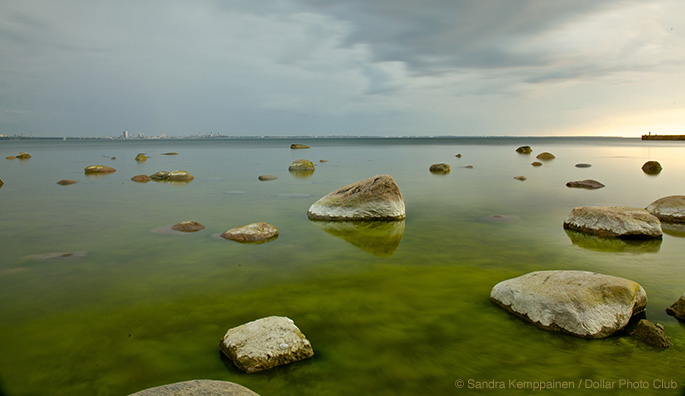
Harmful algal blooms are toxic to water bodies and ecosystem, and the people, animals, and plants that rely on the water from these bodies are put at a health risk. First, many animals, marine life, and birds, and plants can get sick and die from the unnatural growth of algae blooms, threatening the health of water bodies, from the Great Lakes to the Baltic Sea. And not only can people get sick from eating shellfish that come from water systems affected by the blooms, but the airborne toxins from the blooms can exacerbate health problems like asthma. In addition, businesses are affected: as much as $82 billion is lost in tourism, restaurant, and seafood industries each year from harmful algal blooms (HAB). So what can stem these dangerous processes?
Swedish design student Fredrik Ausinch is responding with a new tech innovation: a design for an algae-eating drone. To save the Baltic Sea–one of the world’s most polluted seas–from HABs, the Algae Sea Harvester will eat up algae blooms and refuel itself with biofuel produced by the picked up algae. The implications of the drone as a green innovation are important, as it can help support healthier ecosystems, reduce stress on the environment, and lead to more use and research in biofuel applications.
But without an algae harvester, what can individuals and businesses do to help reduce local algae blooms that affect their watershed? Supporting organic agriculture helps reduce the use of harmful fertilizers and pesticides that feed algal blooms is one way to approach the chain. For businesses that have water bodies on their property (such as small ponds and lakes), reducing the use of fertilizers on the surrounding land will make sure that the runoff minimizes algal bloom growth. In addition, speaking to a landscaper about riparian vegetation–plants, trees, and shrubs that buffer the body of water–will help reduce soil erosion and pollutants entering the water body. And of course, reducing runoff pollution by supporting recycling and waste management programs play an important role in reducing pollutants in our water supply.
So until the drone is made and becomes widely applied to other affected bodies of water, continuing with healthy environmental choices can improve your local watershed.




































































































































 Three Ways to Engage Teams and Clients to Maximize Your Recycling Program Engagement
Three Ways to Engage Teams and Clients to Maximize Your Recycling Program Engagement  How to Integrate Accessibility Into Your Sustainability Planning
How to Integrate Accessibility Into Your Sustainability Planning  Why Park Benches Can Promote Workplace Well-Being
Why Park Benches Can Promote Workplace Well-Being 
